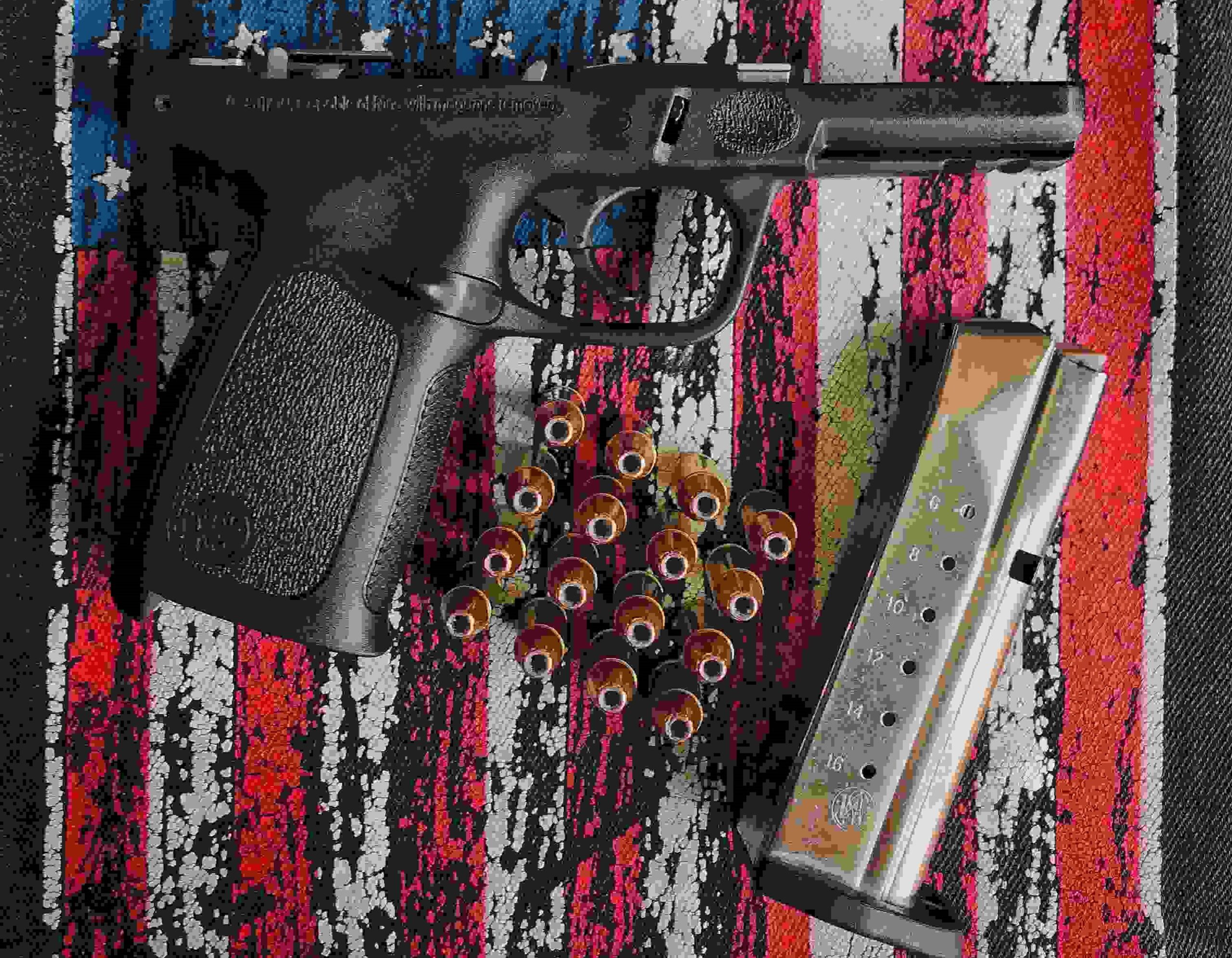Bottom Line Up Front: States that loosened gun laws following a landmark 2010 Supreme Court ruling experienced over 7,400 excess pediatric firearm deaths through 2023, with states maintaining strict firearm regulations seeing stable or declining death rates among children and teens.
Guns now kill more American children than car crashes do. This stark reality emerged from new research published in JAMA Pediatrics showing that states with permissive firearm laws experienced thousands of preventable child deaths following the 2010 McDonald v. Chicago Supreme Court decision that extended Second Amendment protections to state and local governments.
Dr. Jeremy Faust, an emergency physician at Brigham and Women’s Hospital and the study’s lead author, analyzed Centers for Disease Control and Prevention mortality data spanning 25 years. His team found that over 7,400 more pediatric deaths due to firearms than would have been expected occurred in the post-McDonald era, concentrated almost entirely in states that chose to relax their gun regulations.
McDonald v. Chicago Transforms State Gun Policy Landscape
The 2010 McDonald v. Chicago Supreme Court ruling fundamentally altered America’s firearm regulatory environment. The decision found that the right of an individual to “keep and bear arms”, as protected under the Second Amendment, is incorporated by the Fourteenth Amendment and is thereby enforceable against the states.
Before McDonald, states possessed broader authority to regulate firearms within their borders. Until 2010, the Second Amendment didn’t apply to the states, explained Duke Law Professor Darrell Miller in recent analysis. The ruling created what researchers describe as a “natural experiment” – some states tightened regulations while others moved toward more permissive policies.
“There is just this flurry of activity and it’s in both directions,” Faust noted. “You have states like Alabama or Louisiana and Texas, that are enacting much more aggressive laws in terms of freedom of access, freedom of carry laws about concealed carry in churches, laws about stand-your-ground, other things that make it just easier to get a firearm quickly and to carry.” Meanwhile, California and other states implemented stricter safety requirements, training mandates, waiting periods, and enhanced background checks.
Study Methodology and State Classifications
Researchers utilized CDC WONDER database mortality records from 1999 to 2023, focusing on firearm deaths among children ages 0-17. They categorized states into three tiers based on composite policy scorecards from Brady, Everytown for Gun Safety, and Giffords organizations:
- Most Permissive: 30 states with minimal firearm restrictions
- Permissive: 12 states with moderate regulations
- Strict: 8 states plus Washington D.C. with comprehensive gun safety laws
The team ran excess mortality analysis comparing actual deaths from 2011-2023 against projections based on pre-McDonald trends (1999-2010) and population growth patterns.
Stark Results: Geography of Child Gun Deaths
The findings revealed dramatic geographic disparities. More than 7,400 excess pediatric firearm deaths in states that loosened gun laws – including over 6,000 in the most permissive group of states occurred during the study period.
By contrast, the eight strictest states overall saw no excess deaths. The model predicted 4,267 fatalities, while 4,212 were recorded – a near-match that bolstered confidence in the analysis.
Four states with strict firearm policies – California, New York, Maryland, and Rhode Island – actually experienced decreased pediatric firearm mortality since 2010.
Intent Behind Pediatric Firearm Deaths
“The biggest thing people always want to know is, what’s the intent behind these?” Faust explained. “And I think what surprises most people is that accidents are a very small number of these deaths – it’s mostly homicide and suicide.”
Overall, there was an increase in child deaths from firearm-related homicides and an even greater increase in child deaths from firearm-related suicides across permissive states. Most permissive states saw 2,004 excess homicides and 3,399 excess suicides among children, while permissive states recorded 269 excess homicides and 1,077 excess suicides.
Notably, pediatric mortality from others causes – including other suicides – did not increase in this time, indicating the surge was specific to firearm-related deaths rather than a broader increase in youth mortality.
Racial Disparities in Firearm Mortality
Black children saw the steepest increases in firearm mortality rates. In the most permissive and permissive states, non-Hispanic Black populations had the largest increase in firearm mortality among children.
Researchers speculated that disparities in safe firearm storage practices could contribute to these racial differences, though the study did not establish causation for this trend.
Child Access Prevention Laws Show Promise
While the current study focused on broad policy categories, extensive research demonstrates the effectiveness of specific firearm safety measures. Child Access Prevention (CAP) laws, which criminalize negligent storage that allows minors to access firearms, show evidence of reducing youth firearm injuries and deaths.
Research has found that child access prevention laws can reduce suicide and unintentional gun deaths and injuries among children and teens. Studies have shown varying levels of effectiveness, with stronger laws generally associated with greater reductions in pediatric firearm mortality.
Dr. Maya Haasz, an emergency medicine researcher at the University of Colorado who wasn’t involved in the JAMA study, emphasized the preventability of many deaths. “This doesn’t mean we should change all our laws at once, but perhaps if we could look at these laws and see which ones are effective, then we could start moving towards safety.”
Similar Posts
Background Checks and Safe Storage Research
Evidence supports several specific policy interventions. Background checks for gun purchases are designed to prevent access to guns by convicted felons and other prohibited possessors. Research suggests various background check policies may reduce firearm homicides, though effects vary by implementation.
Data from the National Fatality Review Case Reporting System from 2004 to 2015 showed that, among firearm suicides by children ages 10 through 18 for which storage practices could be identified, more than three-fourths involved the use of a gun that had been stored loaded and unlocked.
Safe storage education and counseling show measurable impact. Research suggests that increases in the number of American homes safely storing firearms could prevent significant numbers of youth gun deaths due to suicide and unintentional firearm injury.
Clinical Perspectives from Emergency Medicine
Dr. Christopher Rees, a pediatric emergency physician at Children’s Healthcare of Atlanta who researches firearm policy effects, observed stark differences between practicing in states with different regulatory approaches.
“When I was a fellow in Boston at Boston Children’s Hospital, I saw zero firearm-related injuries or fatalities,” Rees noted. “Since I have moved to Atlanta, I can’t count how many children I have taken care of who have been involved in firearm-related injuries.”
“It’s not a political issue at the bedside,” Rees emphasized. “We should approach this as a way of protecting children and keeping children out of the emergency department.”
International Context
Compared to other high-income nations, the United States pediatric firearm mortality rate remains dramatically elevated. The current study focused on intra-U.S. comparisons, but previous research has documented substantially higher rates of child firearm deaths in the United States compared to peer countries.
Research Funding Under Threat
The JAMA Pediatrics study emerged from unfunded research, highlighting vulnerabilities in firearm violence research infrastructure. “We do it because we care about it. But that’s not sustainable,” Faust warned. “Our system really does function well based on a synergy between public resources and extramural research, and I’m really worried that the cuts to the CDC will make it harder for us to track this and every other epidemic.”
Wide-ranging layoffs at the Centers for Disease Control and Prevention have decimated staff responsible for gun violence research and prevention following Trump administration cuts that began April 1, 2025. Since 2019, the Injury Center has managed half of the research funding — $12.5 million annually — provided by Congress.
Experts said the layoffs could cripple the administration of federal gun violence research funding, which resumed in 2019 only after Congress ended a decades-long freeze. David Hemenway of Harvard’s T.H. Chan School of Public Health warned that current cuts may prove more damaging than the 1990s research restrictions: “Compared to this, that’s peanuts.”
Last month, hundreds of leading national, state, and local medical, public health, and research organizations sent letters urging federal lawmakers to fund federal firearm violence prevention research. “Across this country, communities are suffering from preventable firearm-related injuries and deaths. The freedom of individuals to own firearms can and should be balanced with protecting children and their families from serious harm, and ensuring the health, security, and well-being of all people” they wrote.
Hospital-Based Violence Intervention Programs
Research on Hospital-Based Violence Intervention Programs suggests these interventions can reduce reinjury and criminal justice involvement among assaulted youth when bedside counseling and community-partner referrals are provided.
American Academy of Pediatrics Guidelines
The American Academy of Pediatrics has long advised physician counseling on secure storage – guns locked unloaded with ammunition stored separately – and advocates for universal background checks, safe storage laws, and child access prevention laws to mitigate youth access.
Dr. Lois Lee, chair of the American Academy of Pediatrics Council on Injury, Violence, and Poison Prevention, emphasized intervention opportunities. “In some ways, suicide can be more preventable than homicide, and a lot of that has to do with what children and youth have access to when they are having suicidal ideation. Means matter.”
Historical Context
From 1999 to 2010, before McDonald, the trajectory of pediatric firearm deaths showed different patterns than the post-2010 surge in permissive states. Firearms have risen to become the leading cause of death among children and teens in the United States in recent years, surpassing motor vehicle accidents in 2020.
Prevention-Focused Solutions
“It’s not a pipe dream. The best-case scenario isn’t some fictitious place. The best-case scenario is just a bunch of states that we currently live in, or don’t,” Faust noted about the potential for reducing pediatric firearm deaths.
Dr. Chethan Sathya, a pediatric surgeon and director of the Center for Gun Violence Prevention at Northwell Health, emphasized the need for specificity in policy approaches. “We really have to ask ourselves the question: What really worked in the states that had lower deaths?”
The research suggests several evidence-based interventions could significantly reduce pediatric firearm mortality:
- Universal background checks for all firearm sales
- Child access prevention laws with criminal penalties for negligent storage
- Safe storage requirements and public education campaigns
- Extreme risk protection orders allowing temporary firearm removal
- Permit-to-purchase systems requiring state authorization
- Waiting periods for firearm purchases

As emergency departments nationwide see frequent firearm injuries according to recent data, the research provides a roadmap for evidence-based policy responses. “We wear our seat belts all the time because you don’t know when you’re going to get in a car accident,” Dr. Rees observed. “So, in my mind, the way to avoid unpredictable events is to have smart, preventive pieces in place before those unpredictable moments may come up.”
The JAMA Pediatrics study provides evidence that state-level firearm policies substantially influence pediatric mortality rates, offering policymakers and advocates data for pursuing evidence-based approaches to protecting children from preventable gun violence.


















